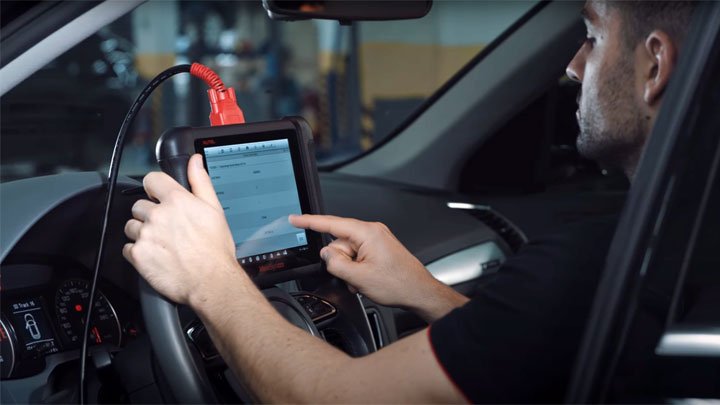10 Top Mobile Apps For Broken Key Repair
Broken Key Repair: Solutions for Common Lock Issues
Intro
Keys are vital tools in our day-to-day lives, permitting us to protect our homes, lorries, and individual valuables. However, they can also break, resulting in aggravations and inconveniences. Understanding how to resolve broken key issues is important for anybody wishing to preserve their locks and guarantee access to their property. This post covers various aspects of broken key repair, including common causes, repair methods, and preventive procedures to avoid future circumstances.
Common Causes of Broken Keys
Keys can break for several factors. Comprehending these causes can help in preventing future events:
- Wear and Tear: Over time, keys can use down due to regular usage, causing weakened shafts that are most likely to break.
- Poor Key Design: Keys that are poorly designed might do not have structural integrity, making them more susceptible to breaking under tension.
- Incorrect Key Usage: Using extreme force to turn a key, especially in a jammed lock, can easily lead to a breakage.
- Ecological Factors: Extreme temperatures or direct exposure to moisture can deteriorate metal keys, causing brittleness.
- Lock Malfunctions: A malfunctioning lock can position undue stress on a key, causing it to snap during operation.
Indications of a Broken Key
Recognizing a broken key frequently includes obvious signs. Here are some indicators:
- Partial insertion into the lock: If the key can not be totally inserted or removed.
- Unexpected resistance: If the key feels stuck when being turned.
- Noticeable divides or fractures: Inspecting the key can reveal cracks or breaks in the metal.
- Incomplete engagement: The key might turn less than required to activate the lock.
Methods for Broken Key Repair
When faced with a broken key, there are numerous techniques to consider for repair. It is necessary to pick the best one based on your specific circumstance.
1. Get Rid Of the Broken Key
If a key breaks within a lock, the very first action is to get rid of the broken part:
- Use tweezers or needle-nose pliers: If a piece is protruding of the lock, gently pull it out.
- Insert a key extractor tool: This customized tool can assist extract lodged parts better.
Tool
Best Used For
Tweezers
Shallow extraction
Key extractor tool
Deeply lodged key pieces
Lubricant spray
Alleviating extraction of stuck parts
2. Superglue Method
For circumstances where a key has partly broken but is intact enough to stay gripped, the superglue technique may use a momentary fix.
- Tidy the broken surfaces completely.
- Apply a thin layer of superglue.
- Hold the pieces together for a few minutes until the glue sets.
Keep in mind: This approach is not an irreversible service and ought to be utilized with care as the repair can easily fail under functional stress.
3. Metal Epoxy
For a more robust repair, metal epoxy supplies a stronger bond than superglue.
- Follow the guidelines on the epoxy product packaging for preparing the adhesive.
- Apply to the broken location and hold till set (normally a couple of hours).
4. Duplicate the Key
In circumstances where lock functionality is important, creating a duplicate key is frequently the finest route:
- Visit a locksmith: Many locksmiths can replicate keys rapidly and effectively.
- Utilize a key-tracing service: Some locksmith professionals utilize tracing methods to cut an identical key based upon the remnants.
5. Lock Replacement
When keys repeatedly break, it may be because of lock concerns instead of key integrity. In such cases:
- Consult a locksmith to examine the lock's condition.
- Consider replacing the lock completely if considerable damage or wear appears.
Avoiding Key Breakage
Avoiding key breakage is frequently better than repair. Here are some useful pointers:
- Limit force on keys: Always turn keys carefully to prevent unneeded stress.
- Regular key assessment: Check for wear and change keys revealing indications of damage.
- Utilize a keychain: Prevent excessive flexing by utilizing a durable keychain.
- Lubricate locks: Ensure locks operate smoothly to decrease pressure on keys.
- Shop keys effectively: Avoid putting type in environments that can trigger rust or rust.
FAQs About Broken Key Repair
1. Can I repair a broken key myself?
Yes, you can try to repair a broken key yourself using techniques like the superglue or metal epoxy methods. Nevertheless, these are short-lived repairs, and it is a good idea to consult an expert locksmith for a more durable solution.
2. Is key cutting fixing a broken key?
In many cases, especially with emotional or distinct keys, a repair might be worth it. For standard keys, duplication or replacement is normally more reliable and reputable.
3. How can I prevent my keys from breaking?
To prevent damage, ensure that keys are exempt to extreme force, frequently check them for wear, and keep locks properly maintained.
4. When should I seek a locksmith's aid?
If you are unable to get rid of a broken key from a lock or if the lock breakdowns regularly, it's best to look for a locksmith's knowledge.
Broken keys can provide a considerable trouble, but they are workable with the right technique. By comprehending the common causes and available repair approaches, individuals can respond successfully to key damage. Drawing from remote key repair will likewise assist keep key integrity and performance. Ultimately, a proactive approach to key and lock maintenance can considerably minimize the frequency of these bothersome problems.
